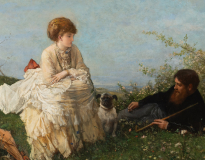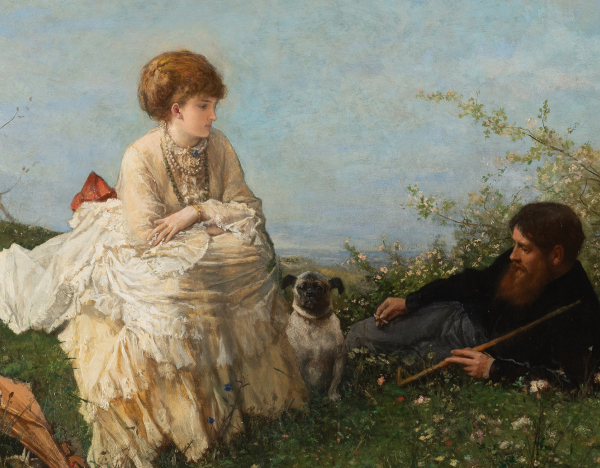Ferdinand Heilbuth
Biography
Ferdinand Heilbuth, born on 27 June 1826 in Hamburg and died on 19 November 1889 in Paris, was a Franco-German artist whose career marked a transition between academic Romanticism and the beginnings of Impressionism. The son of a rabbi, Heilbuth left his home town to study art in Germany and then in France, where he became a pupil of Charles Gleyre and Paul Delaroche at the École des Beaux-Arts in Paris. This dual influence, both academic and romantic, had a profound effect on his early work.
Heilbuth began his career with historical and religious paintings, often imbued with deep sentimentality and narrative precision. His scenes of the Italian Renaissance, such as The Tasso at the Court of Ferrara (exhibited at the Paris Salon), testify to his interest in meticulous reconstruction and poetic atmosphere. Fascinated by cardinals and religious figures, he frequently explored their lives and environments in a series of works that, while respecting academic canons, manifest a particular sensitivity to human emotions.
In the 1860s, Heilbuth moved towards a freer, brighter style. Influenced by the vibrant light of French landscapes and the development of Impressionism, he began to favour less narrative compositions, where visual sensation took precedence over historical narrative. Although he did not officially adhere to the Impressionist movement, his work reveals a similar approach to the treatment of atmospheric effects and the play of light.
During his stay in London between 1870 and 1878, because of the Franco-Prussian war, Heilbuth deepened his interest in landscape painting. Inspired by the works of J.M.W. Turner, he adopted lighter palettes and more open compositions, incorporating the fluidity of natural elements into his canvases. This period marked a major turning point in his artistic production.
Returning to France after 1878, Heilbuth concentrated on landscapes around Paris, particularly along the Seine. His painting from this period, often bathed in soft, natural light, reflect a mastery of reflections and atmospheric variations. Scenes such as Promenade sur la Seine and Rêverie capture fleeting, poetic moments, paying tribute to the beauty of everyday life.
93400 Saint-Ouen sur Seine

